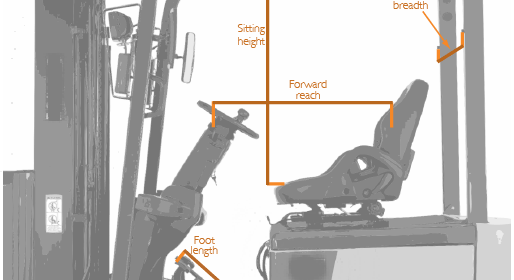An understanding of human factors and ergonomics facilitates the design of artifacts, tasks, and environments that fulfill their users’ physical and cognitive requirements. Research in these fields furthers the goal of efficiently accommodating the desired percentage of user populations through enhanced awareness and modeling of human variability. Design for sustainability (DfS) allows for these concepts to be leveraged in the broader context of designing to minimize negative impacts on the environment. This paper focuses on anthropometry and proposes three ways in which its consideration is relevant to DfS: reducing raw material consumption, increasing usage lifetimes, and ethical human resource considerations. This is demonstrated through the application of anthropometry synthesis, virtual fitting, and sizing and adjustability allocation methods in the design of an industrial workstation seat for use in five distinct global populations. This work highlights the importance of and opportunities for using ergonomic design principles in DfS efforts.

